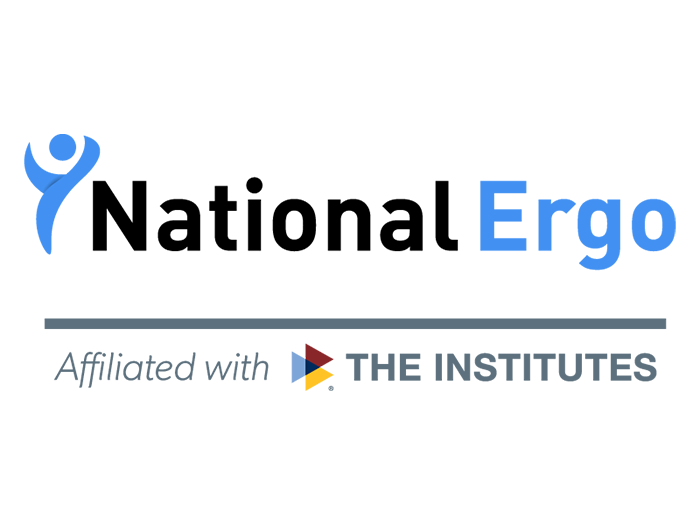Sponsored Content by IPS
Ongoing Opioid Battle Requires a Focus on ‘What Matters Most’

The workers’ compensation industry has made some very positive headway in slowing down the abuse of opioid-based prescription medications for pain management. A variety of states are adopting chronic pain medication guidelines as well as Evidence Based Formulary guidelines such as Official Disability Guidelines (ODG) from the Work Loss Data Institute.
Recent examples of this include the State of Virginia’s adoption of ODG and several other states are considering similar formularies as the success of these formulary guidelines are producing impactful results.
Unfortunately, the same can’t be said for the overall commercial market, where the rate of overdose deaths involving opioids, both prescription painkillers and heroin, tripled from 2000 through 2014, according to the Centers for Disease Control and Prevention (CDC).
Greg Todd, CEO and founder of Integrated Prescription Solutions Inc. (IPS), a Costa Mesa, Calif.-based pharmacy benefit manager (PBM) for the workers’ compensation and disability market, has grappled with the issue of trying to balance effective opioid-based pain management with proper oversight and monitoring and IPS client costs. And while he would be the first to say that there can be a place for opioids in combating chronic pain, it requires an extremely careful, structured and analytical approach – one that succeeds without risking either the patient’s well-being or the payers’ bottom line.
“The workers’ compensation industry has really shown improvement when compared to the commercial market,” he said. “Workers’ comp PBMs across the board are having a positive impact because we are doing things much differently today that we were, say, as little as three years ago.
“Even so, it’s an ongoing battle,” he added. “The key is focusing on what matters most.”
IPS data from 2013 to 2015 demonstrates the type of impact that “really matters” regarding reductions in opioid abuse.
Overall, in 2013, 77 percent of IPS workers’ compensation claimants were using opioids. Within two years of applying IPS’s focused approach for managing opioid use, that number was reduced by 20 percent. During the same time period, opioid prescriptions per claimant experienced a 27.8 percent drop, going from nearly 6 to 4. Finally, the overall prescription medications per claimant fell from 24 to 15, a 33 percent decline.
Todd expects that the 2016 results will continue to show that type of improvement.
How does IPS do it? By combining deployment of evidence-based (EB) narcotic formularies, front-line physician education, focused utilization monitoring and excellent nurse case manager (NCM) and Peer-to-Peer oversight.
“Our folks have been very diligent over the past three years, and the results bear it out,” Todd said, adding that a critical success factor for plans like ODG came with initial opioid prescriptions being automatically referred for peer-to-peer Physician Pharmacy Review.
Todd broke down the IPS formula for opioid management success into four key components:
Plan Flexibility, Customization
Todd explained that today’s constantly changing state-by-state chronic pain and opioid abuse guidelines have made it very difficult for large commercially weighted PBM organizations to keep pace for clients. The result is they often are not able to customize treatment plans on an enterprise default formulary basis, let alone at a granular, claimant level. This often takes months for some larger PBMs to accomplish assuming they are willing, which typically depends on the size of the client.
In this case, IPS’s main advantage is that it built into its system architecture the ability to capture every formulary and plan design, so that its database encompasses 1,000 or more custom plans – one for each unique combination of drugs derived from every claimant who has been in the IPS system.
Todd added that the way the IPS system is built, an adjuster can create or modify an existing treatment plan on the fly, on-demand, and not have to wait the usual three to four weeks for their PBM to make formulary updates in the system. Usually, PBMs are only able to alter or change the overall default formulary at an enterprise level, and no individual claimant customization is available.
Embedded Evidenced-Based Guidance/Alerts
Another layer of opioid management comes with IPS’s evidence-based approach, so that even if a state hasn’t yet adopted that strategy, adjusters trying to get guidance can still feel confident they are making the right decisions. IPS built its system so that when the client data feed includes an ICD 9/10 diagnostic code, instant guidance is sent to the assigned adjuster from the ODG medical treatment guidelines. This means every aspect of a claim – from pharmacy to ancillary products/PT, DME, Diagnostics, etc. – is covered.
“All the elements are there,” Todd said.
“If an adjuster comes in for a morning shift and checks on a claim filed yesterday on the ‘new claim’ dashboard, he or she can easily see that ODG and its evidence-based research will result in clear guidance on the appropriate course of treatment for each new claim at the click of a mouse, creating a timely and cost effective Utilization Review guideline,” Todd said. The adjuster receives on- demand analytics that immediately identify any red flags, initiate corrective action and track and report progress.
“ODG is one of the most respected, reputable guidelines,” he said. “Not only is it instant and delivers what they need, but it also saves the client money because in many cases the need for an outside UR company is eliminated.”
Drug/Dosage Monitoring and Testing
In 2015, IPS implemented its opioid dosage management and the results have been very positive. It set basic guidelines according to ODG, which is 100mg of Morphine Equivalent Dosage (MED) per day. Additionally, as a practical matter and to avoid unnecessary testing for acute injuries, IPS only flags any claimant using the meds more than 90 days. The parameters for alerts are completely customizable at the client level. If during treatment any of those thresholds are met, then the IPS system generates claimant specific communication with the adjuster, recommending drug screening as part of the process.
“The key is to get out in front of it early and stop any potential for abuse, addiction or diversion,” Todd said. Frankly, diversion is also a big problem in the United States since “street value is very high for opiates, and if a claimant knows they are being monitored and a drug test will be used to see if they are really taking all those meds, it will have impact.”
IPS varies its random drug testing depending on usage levels; extreme numbers result in a claimant being tested up to four times annually. Others may be only once a year.
“Once that aspect of our program began, behavior changed quickly,” Todd said.
Physician Monitoring, Management
Finally, IPS takes a polymodal approach to physician monitoring, education, and proactive guidance in best practice prescribing, be it state legislated or just simply backed by good Evidenced Based Medicine. For example, if a treating physician consistently prescribes a brand drug and there are generics available, a customized letter goes out from IPS explaining the generic therapeutically equivalent option and encouragement to help contain costs for the employer.
If for any reason a physician insists that a non-generic opioid be used, despite receiving a “dispense as written” letter, the next IPS step is a system generated and tracked letter of medical necessity. The idea is that IPS will respect what the treating physician has to say, but they need to provide medical documentation as to why that brand drug is necessary.
“We have an eighty percent success rate with our first communication,” Todd said, adding that outcomes of any reviews will be tracked to determine if prescribing patterns change after the intervention.
“During the entire process, our goal is to be focused on what matters,” Todd concluded. “Based on the results we’re experiencing, it’s working for both our clients and injured workers.”
Next quarter we will take an in-depth look at the escalating frequency and cost of Compound Prescriptions in workers’ comp. Don’t miss this valuable discussion and learn about the profound improvements IPS has achieved.
Visit www.ipsusa.com or call toll free at 866-846-9279 for more information.
This article was produced by the R&I Brand Studio, a unit of the advertising department of Risk & Insurance, in collaboration with IPS. The editorial staff of Risk & Insurance had no role in its preparation.










